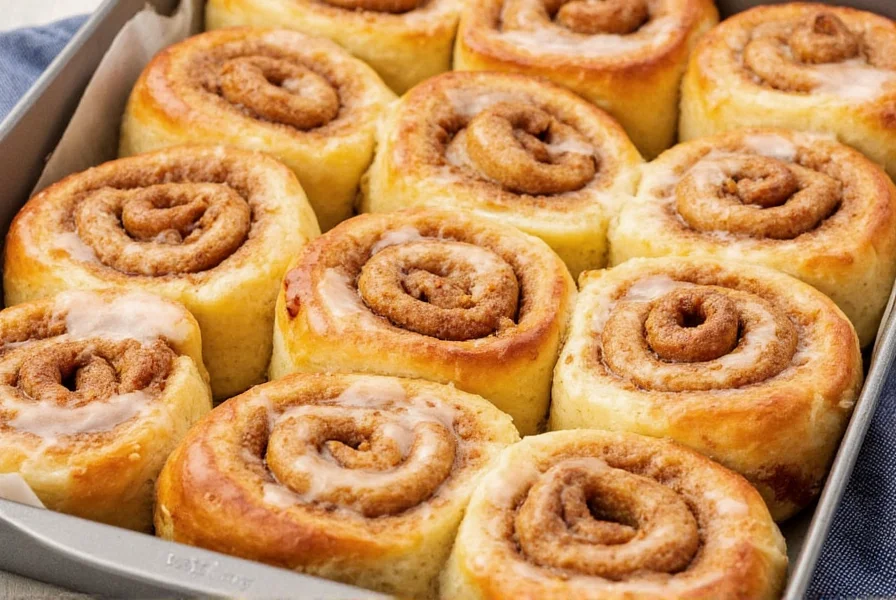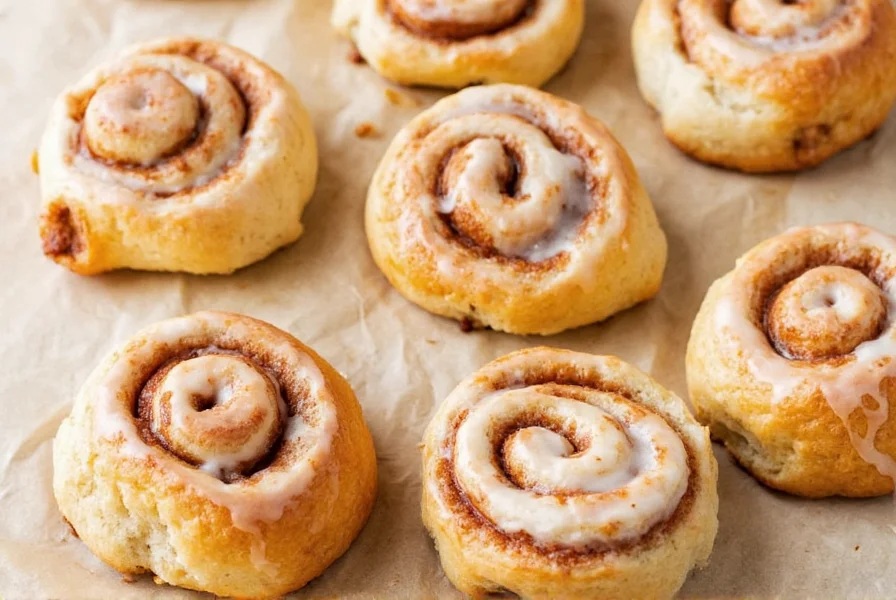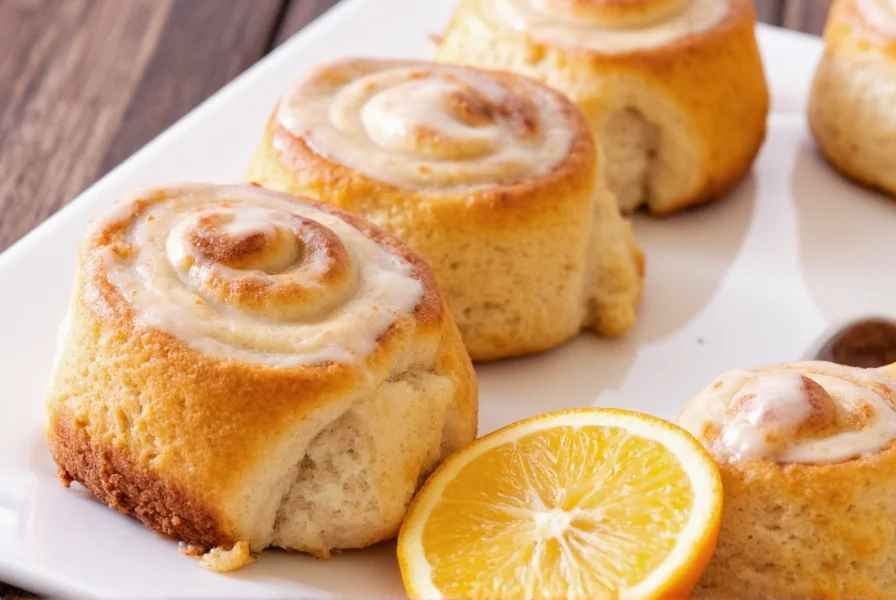For baking enthusiasts seeking to elevate their cinnamon roll game, orange cinnamon buns offer a sophisticated twist on a classic favorite. This citrus variation transforms the familiar comfort food into something special for brunches, holidays, or weekend baking projects. Unlike standard cinnamon rolls, the addition of orange provides a bright counterpoint to the rich, spicy filling that many find refreshingly different.
The Citrus Difference in Cinnamon Buns
What sets orange cinnamon buns apart isn't just the addition of orange flavor—it's how the citrus components interact with the other ingredients. Orange zest contains aromatic oils that distribute evenly throughout the dough, while freshly squeezed juice adds moisture and subtle acidity. This acidity actually helps activate the yeast more effectively, resulting in better rise and texture.
When developing your homemade orange cinnamon buns recipe, the quality of your citrus matters significantly. Always use fresh oranges rather than bottled juice or artificial flavorings. The zest should come from unwaxed oranges, and you'll need approximately two medium oranges to yield enough zest and juice for a standard batch of 12 buns.

Essential Ingredients Breakdown
The magic of perfect orange cinnamon roll filling lies in the balance between ingredients. Here's what you'll need for exceptional results:
| Component | Key Ingredients | Why It Matters |
|---|---|---|
| Dough | All-purpose flour, active dry yeast, warm milk, sugar, salt, butter, eggs, orange zest | Orange zest in dough provides subtle citrus aroma throughout |
| Filling | Brown sugar, cinnamon, softened butter, orange zest, orange juice concentrate | Concentrated orange flavor balances sweetness of filling |
| Glaze | Powdered sugar, fresh orange juice, vanilla extract | Light citrus glaze enhances without overwhelming |
Step-by-Step Preparation Guide
Creating exceptional citrus cinnamon buns requires attention to detail at each stage. Follow these steps for bakery-quality results:
- Dough preparation: Warm milk to 110°F (43°C), then dissolve yeast and 1 teaspoon sugar. Let sit for 5-10 minutes until foamy. In a separate bowl, combine flour, remaining sugar, salt, and finely grated orange zest.
- Mixing: Add yeast mixture, softened butter, and eggs to dry ingredients. Mix until a soft dough forms. Knead for 8-10 minutes until smooth and elastic.
- First rise: Place dough in a greased bowl, cover, and let rise in a warm place for 1-1.5 hours, or until doubled in size. The orange zest will infuse the dough during this time.
- Filling preparation: While dough rises, mix brown sugar, cinnamon, additional orange zest, and orange juice concentrate to create a paste-like consistency.
- Rolling and cutting: Roll risen dough into a 16x20 inch rectangle. Spread filling evenly, leaving ½ inch border. Roll tightly and cut into 12 equal pieces using dental floss for clean cuts.
- Second rise: Place buns in greased baking dish, cover, and let rise 30-45 minutes until puffy.
- Baking: Bake at 375°F (190°C) for 22-25 minutes until golden brown. Immediately top with citrus glaze.
Proven Baking Tips for Perfect Results
Mastering baking perfect orange cinnamon rolls requires understanding these critical techniques:
- Temperature control: Keep ingredients at room temperature except for the butter in the filling, which should be softened but not melted. This ensures proper incorporation and prevents the filling from becoming runny.
- Zest properly: Use a microplane for the finest zest that distributes evenly without bitter pith. One orange typically yields 1-2 tablespoons of zest.
- Juice concentration: For the filling, reduce fresh orange juice by half to intensify flavor without adding excess moisture that could make the filling soggy.
- Cutting technique: Use unflavored dental floss to slice the rolled dough—this prevents squishing and ensures clean layers.
- Baking temperature: Start at 375°F then reduce to 350°F after 15 minutes to prevent over-browning while ensuring thorough cooking.
Troubleshooting Common Issues
Even experienced bakers encounter challenges with troubleshooting orange cinnamon buns. Here's how to address frequent problems:
- Dense texture: Usually caused by too much flour or under-proofed dough. Measure flour by spooning into measuring cups (don't scoop), and ensure dough doubles in size during rising.
- Filling leakage: Orange juice adds moisture that can make fillings runny. Thicken the filling with 1-2 teaspoons of cornstarch or reduce the juice as mentioned previously.
- Bland citrus flavor: Use both zest and juice for maximum flavor impact. The aromatic oils in zest provide the strongest citrus notes.
- Overly sweet: Balance sweetness by increasing cinnamon proportionally (1½ tablespoons per cup of sugar) and using orange juice's natural acidity.
- Dry buns: Don't overbake—remove when centers reach 190°F (88°C) internal temperature. The residual heat will continue cooking them slightly.
Serving and Storage Recommendations
For optimal enjoyment of your orange cinnamon bun glaze recipe creations:
- Serve warm but not hot—allow buns to cool for 15-20 minutes after baking for the best texture
- Pair with black coffee or Earl Grey tea to complement the citrus notes
- Store leftovers in an airtight container at room temperature for up to 2 days
- For longer storage, freeze unbaked rolls after the second rise, then bake from frozen with additional 10-15 minutes
- Reheat in a 300°F (150°C) oven for 8-10 minutes rather than microwaving to maintain texture

Why This Variation Works So Well
The success of orange zest in cinnamon rolls lies in flavor chemistry. Citrus compounds interact with cinnamon's cinnamaldehyde, creating a more complex aromatic profile. The slight acidity from orange juice also helps balance the richness of the butter and sugar, making the buns feel less heavy despite their indulgent nature. This flavor pairing works particularly well in brunch settings where lighter, brighter flavors are appreciated alongside richer morning dishes.
Frequently Asked Questions
Can I use orange extract instead of fresh orange zest and juice?
While orange extract can provide citrus flavor, it lacks the nuanced complexity of fresh zest and juice. For best results, use fresh oranges. If substituting, use 1½ teaspoons of pure orange extract plus 2 tablespoons of orange juice, but expect a less vibrant flavor profile.
How do I prevent my orange cinnamon buns from becoming too moist?
To prevent excess moisture, reduce fresh orange juice by half before adding to the filling. The filling should have a paste-like consistency, not runny. Also, avoid overfilling the rolls and ensure proper baking time to set the structure.
What's the ideal ratio of cinnamon to orange flavor in these buns?
The perfect balance is approximately 2 tablespoons cinnamon to the zest of 2 medium oranges per standard batch. This creates a harmonious blend where neither flavor dominates. Adjust to personal preference, but maintain this baseline ratio for balanced results.
Can I make orange cinnamon buns ahead of time for morning serving?
Yes, prepare the rolls through the second rise, then refrigerate overnight. In the morning, let them sit at room temperature for 30 minutes while the oven preheats, then bake as directed. This method actually enhances flavor development.
Why did my orange cinnamon buns turn out dry despite following the recipe?
Dry buns typically result from overbaking or inaccurate flour measurement. Use a kitchen scale for precise flour measurement (125g per cup), and check buns 2-3 minutes before the minimum baking time. They're done when internal temperature reaches 190°F (88°C).











 浙公网安备
33010002000092号
浙公网安备
33010002000092号 浙B2-20120091-4
浙B2-20120091-4